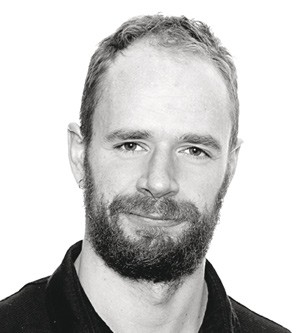Current anti-drugs policy entails consequences detrimental to society, rests on a fallible scientific basis and ought to be revised.

Photo: Sturlason
Humans have always felt a need for psychoactive substances, and the issue of how society should regulate the relationship between pleasure and punishment is not a new one. All intoxicating substances have potentially harmful effects. But does this prohibitionist drug policy work – and at what cost? The war on drugs is by its nature vague: who are the targets of this war – the drug lords, the users, the criminal activity or the health consequences? Or is it the very «self-transforming» effects of the drugs that are targeted (1)? Prohibitionist policies at the global level have been the cause of crime, violence and an increase in infectious diseases such as HIV, hepatitis C and tuberculosis (2). An editorial in the BMJ claims that «often, the war on drugs plays out as a war on the millions of people who use drugs, and disproportionately on people who are poor or from ethnic minorities, and on women» (3). This policy entails huge financial consequences. It has been a factor that has pushed people into consuming drugs in less safe ways and made it difficult for them to seek out the health services that they need (3). Drug policies intersect with and reinforce already existing discriminatory tendencies in society.
Global drugs control policy came about with the signing of the international opium convention in The Hague in 1912. The same mindset has later been reflected in three UN conventions. The aim has been to restrict access to drugs through strict legal regulation of narcotic substances for non-medical or scientific use (3). However, the convention has failed to solve the issues associated with limited personal use, and the prohibitionist policies have been criticised for being tainted by notions of drug use and addiction that have no scientific basis (2). The negative effects of strict anti-drug policies have received insufficient attention (4).
Doctors should comfort, alleviate and cure – and prevent. The use of illicit drugs as a social problem first came to the fore in the second half of the 1960s (5). To Karl Evang, Director of Health, the use of drugs among the young generation was «to a very large extent […] caused by the general tendency towards alienation in our cultural sphere». Aina Schiøtz, medical historian, thus traces the vision of «a drug-free society» back to Evang’s notions of social hygiene (5). This was also the backdrop for the later criminalisation of personal use through the amendment to the General Penal Code of 1968: drug use was regarded as a social contagion that called for special measures. In parallel, health care was institutionalised, including the establishment of the State Clinic for Drug Addicts in 1961, responsibility for drug users was transferred to the specialist health services in 2004 and drug rehabilitation and addiction medicine were established as a separate specialty in 2012. According to Schiøtz, Norwegian anti-drug policy has been paradoxical: on the one hand, legislation has reflected a strong belief in a drug-free society, whereas on the other, the use of measures for damage control, such as the methadone programme and distribution of syringes, acknowledges that this vision is utopian (5).
It is far from true that most deaths related to substance abuse are caused by heroin – deaths caused by alcohol use occur far more frequently (6). Opioid maintenance treatment (OMT) saves lives, and in this country we were most likely too late in introducing such treatment (7). We have also seen a worrisome trend towards new psychoactive substances with potentially disastrous effects (8). Health workers frequently have no knowledge of what they are providing treatment for, and there is no available antidote. One consequence of the strict prohibition policy is that the use is shifted from known, relatively harmless substances (such as cannabis) towards new, unknown and potentially more dangerous (but not yet outlawed) substances (e.g. synthetic cannabinoids) (9). The prohibitionist policy paves the way for a market for the production of new substances.
We do not know what drug-policy model would work best – countries that have liberalised their policies have chosen different solutions. Numerous measures need to be integrated, but the Johns Hopkins-Lancet commission strongly recommends the decriminalisation of use, possession and sale of minor amounts of drugs and reinforcement of the medical and social alternatives to legal sanctions (2). Substance addiction in individuals should be regarded as a disease, rather than as a manifestation of immorality, while we should not forget the insights from social medicine into the structural mechanisms that perpetuate these problems. Placing drugs in a position separate from other potentially harmful phenomena, such as tobacco, alcohol, unhealthy foods and hazardous sports activities, has diverted attention away from the type of damage control that exists in these arenas, towards prohibition (2).
The national media have opened their columns to let the users themselves recount their experiences. Doctors rarely participate in this debate. Why do we keep so quiet? Are we too busy with the individual cases, in the emergency ward, in our surgeries and outpatient clinics? Or do we feel that we have insufficient insight into the problems being discussed? We should nevertheless contribute to evidence-based policy design. As doctors, we have knowledge as well as responsibility, which ought to give us a leading role in the struggle for more humane drug policies. Society is also our patient.